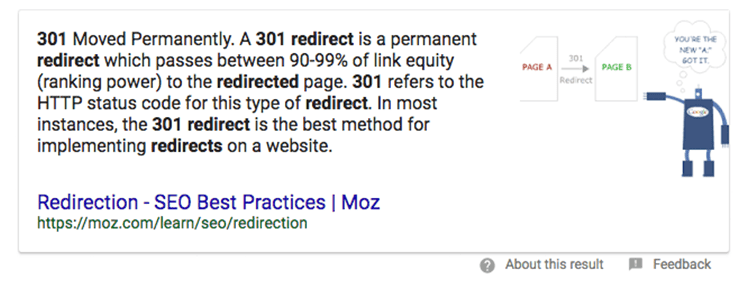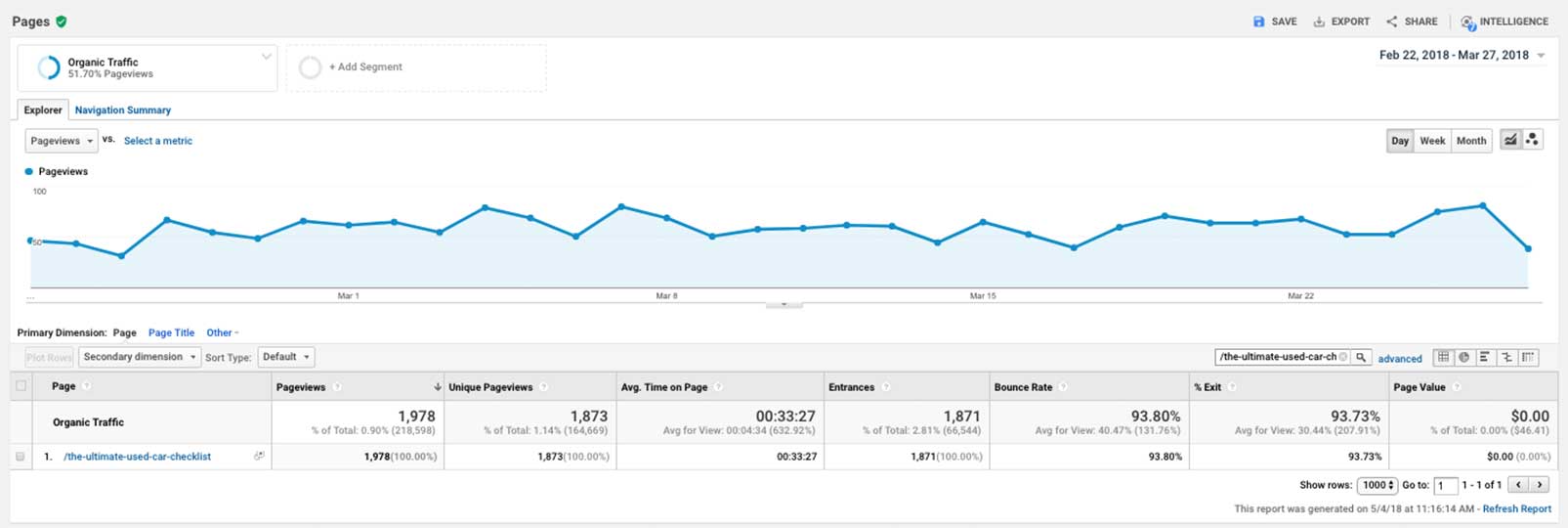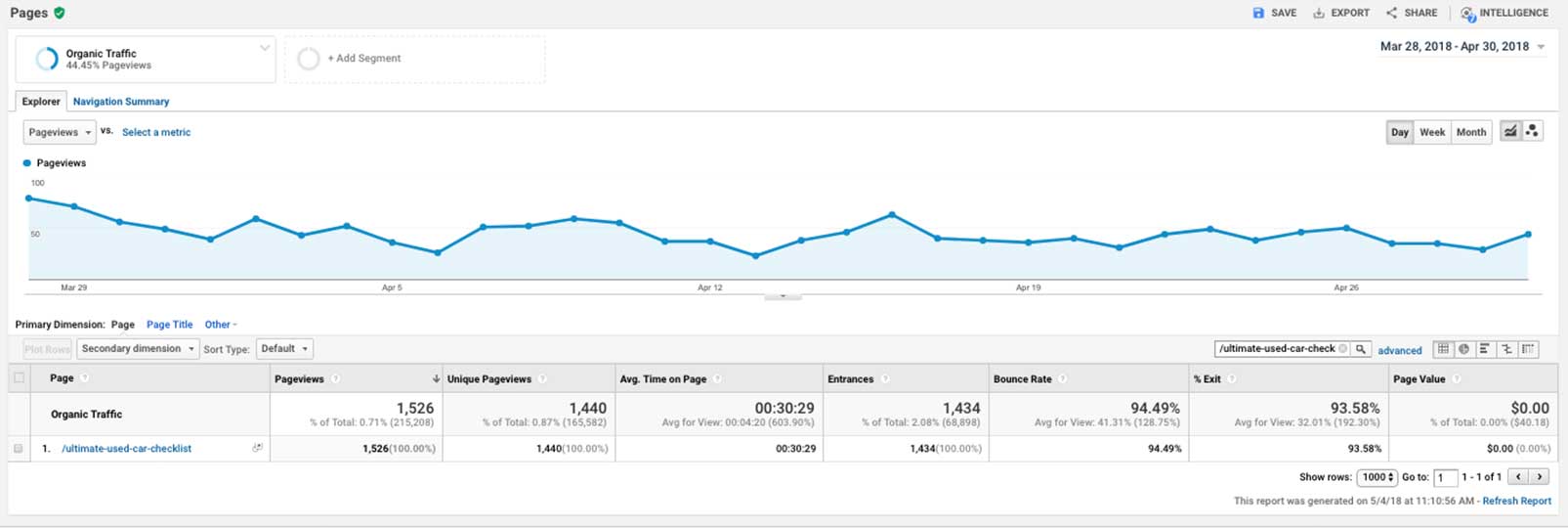A Brief Introduction To 301 Redirects and How They Impact SEO Ranking
Are you interested to learn more about 301 redirects? In this post, we look into the world of 301 redirects and their implications on search engine rankings rankings. For those who are new to the subject, we have included a brief definition of what 301 redirects are and how they are used. We have also conducted our own case study on the effect that 301 redirects have on SEO and rankings.
What Are 301 Redirects?
301 redirects are pretty straightforward, they are simply redirects used to transfer a visitor from one web page to the other. This type of redirect is used when there is a permanent shift in a web page from one location to the another. In networking, the number 301 is used as the HTTP status for a permanently redirected page. Put simply, a 301 redirect informs a web browser that a particular page has been permanently moved to a new location. The key thing to note here is that the move is permanent, meaning the page will not go back to its old location. Visitors who attempt to go to the old location or address will be redirect to the new location.
How To Do 301 Redirects
There are plenty of ways to implement 301 redirects. However, the most commonly used method involves editing your website’s .htaccess file. This file is located in your servers root folder. If you cannot locate the .htaccess file, there may be two possible reasons for this:
1. You are not running your site on an Apache Web Server
If you don’t already know, there are many different types of web servers that you can choose to run your site such as Nginx, IIS/Windows, and Apache. Only Apache servers have .htaccess files. You can determine which server your site runs on by checking its hosting history.
2. You don’t have a .htaccess file
If your site does indeed run on an Apache web server, the other possible reason for not locating the .htaccess file may be that it’s completely non-existent. If you don’t have a .htaccess in your site root folder, you can simply create one using TextEdit (MacOs) or Notepad (Windows). Just create a new file and save it using a .htaccess extension.
# Adding Code To The .HTACCESS File #
For the redirect to work, you have to add some code into the .htaccess file. Here are some examples of code you can use:
– Redirect an old page to a new page
(1 Redirect 301 /old-page.html /new-page.html)
– Redirect an old domain to a new domain
(1 RewriteEngine on
2 RewriteCond %{HTTP_HOST} ^oldsite.com [NC,OR]
3 RewriteCond %{HTTP_HOST} ^www.oldsite.com [NC]
4 RewriteRule ^(.*)$ https://newsite.com/$1 [L,R=301,NC])
Note: If ‘RewriteEngine on’ already exists in your .htaccess, there is no need to include it. Just use the rest of the code as is.
– Redirect entire domain from non‐www to www (and vice‐versa)
(a.) non‐www to www version:
(1 RewriteEngine on
2 RewriteCond %{HTTP_HOST} ^example.com [NC]
3 RewriteRule ^(.*)$ http://www.example.com/$1 [L,R=301,NC])
(b.) www to non‐www version
(1 RewriteEngine on
2 RewriteCond %{HTTP_HOST} ^www.example.com [NC]
3 RewriteRule ^(.*)$ http://example.com/$1 [L,R=301,NC])
– Redirect entire domain from HTTP to HTTPS
(1 RewriteEngine On
2 RewriteCond %{HTTPS} off
3 RewriteRule ^(.*)$ https://%{HTTP_HOST}%{REQUEST_URI} [L,R=301])
Note: Your website must have a valid SSL certificate for this redirect to work.
When implementing any of the above forms of 301 redirects, it’s very important that you put a lot of emphasis on the order and placement of your code. Any errors, misspellings or wrongly ordered code can lead to negative consequences such as redirect chains and loops.
How Do 301 Redirects Impact SEO
301 redirects have always had a close and sometimes controversial relationship with SEO. For many years, SEO experts have looked into how 301 redirects affect SEO and in particular the ranking of a site or web page in the search results. To shed more light on how 301 redirects currently impact SEO, we need to go back in time and evaluate the history of these two distinct parameters.
So, in 2016, Google officially confirmed what many people already speculated, websites that used 301 redirects suffer some loss in link equity and associated rankings. So, how much loss were they talking about? Well, Matt Cutts who was then a Google employee released a video that implied that the loss was at the range of about 15%.
Now using this estimated percentage loss of 15%, we can conclude that:
– A simple 301 redirect: enelafdv.wpengine.com/page1 → enelafdv.wpengine.com/page2 = 15% loss in PageRank
– A 301 redirect chain: enelafdv.wpengine.com/page1 → enelafdv.wpengine.com/page2 → enelafdv.wpengine.com/page3 → enelafdv.wpengine.com/page4 = 38% loss in PageRank
How To Use 301 Redirects To Boost Organic Traffic
There has been a lot of talk about using 301 redirects to boost a website’s or webpage’s organic traffic. Is it really possible? Some people claim that it’s possible. Below are 2 commonly used methods.
1. The Cocktail Method
This method is pretty simple and straightforward. It involves mixing or combining two related web pages that belong to a single website or domain. The method gets its name from its ‘mixing’ nature. The method argues that if we can mix together closely related drinks like gin and tonic, rum and coke etc., why can’t we also mix closely related pages on a site to merge them into something even better. Get the idea?
Well, the combined or consolidate web page will most likely have more backlinks which means that if it was a drink, it would definitely taste better. An example of two closely related pages that can be combined using this method are:
1. https://enelafdv.wpengine.com/blog/Everything-You-Should-Know-About-301-Redirects/
2. https://enelafdv.wpengine.com/blog/Using-301-Redirects-To-Boost-Organic-Traffic/
These two pages can be easily merged using 301 redirects to form one page that attracts more traffic and boosts PageRank.
2. The Merger Method
The merger method is not too different from the cocktail method as it also involves the merging of multiple web pages into a single consolidate web page. However, with the merger method, the pages being merged do not belong to the same website or domain. But, the big question that arises here is how do you merge two web pages from different websites? Well, there are two possible ways to do this:
- – Purchase another business in your niche industry that owns a website.
- – Merge your website with theirs using 301 redirects.
Using this method is not as simple and straightforward as it may sounds. Mixing pages within a site or domain is easy, but mixing pages belonging to a different site is another process altogether. It goes without saying that this process should only be undertaken by experienced practitioners.
A 301 Redirect Case Study
Google has recently come out to state that 301 redirects do not lead to any significant decline in PageRank. In 2019, a simple redirect is claimed to have no little to no effect on the ranking of the new page. Recently after working on a pre-launch plan for a client, we had the opportunity to run our own test to see if this was true or not.
The client’s technology team outlined a build strategy that would ultimately change a majority of their legacy URL paths. We were brought in as a consultant to access the strategy and explore the possible impact.

As a basis for this test, we decided to make changes to one of the clients top performing blog post. While this is not something we would usually recommend, we wanted to prove the effects of the impact of 301 redirects on a single page so the client could make an educated decision around whether or not to update the remaining page URL structure.
Before doing our test we took a capture of legacy URLs page views, and rankings to use as our control. Once ready we updated the target blog page URL path changing it from www.site.com/the-ultimate-used-car-checklist to www.site.com/ultimate-used-car-checklist (removing “the”) we then implemented a 301 redirect from the old URL to the new.
The objective was to demonstrate to the client the effects of 301 redirects on traffic and ranking an and to predict the percentage of its effect across all of the site should a majority of the sites URLs on the page be changed.
Before the 301 Redirect
- Page Views = 1,978
- Unique Page Views = 1,873
- Ranking Keywords: 516
/the-ultimate-used-car-checklist

After the 301 Redirect
- Unique Page Views = 1,526
- Unique Page Views = 1,440
- Ranking Keywords: = 449
/ultimate-used-car-checklist

The Results of our 301 Redirect Test
After our test, we saw that our test page saw a -5% decrease in Page Views and an almost 13% decrease in rankings. This gave us enough data to use to predict the total impact on the site if a majority of the sites URL paths were changed.
- Percentage of Change:
- Page Views = Percent of Change: -5.30839231 %
- Unique Page Views = Percent of Change: -5.63564875 %
- Ranking Keywords: = -12.98449612 %

